Our nominal driveway junction exits onto a nominal road. Both of these have been variously constructed and reconstructed over time, both by myself and by the farmer on the other side of the road.
I have never been entirely happy with the initial turn-off into my property, which is fine for my Land Cruiser but not traversable by lesser vehicles. I’d taken some advice from a proper landscape engineer, and the junction needed to be reshaped to be less of a curve and more of a ninety-degree turn-off. I had hired an excavator for the weekend to sort out the creek crossing, so I seized the opportunity to do something about the junction, too.
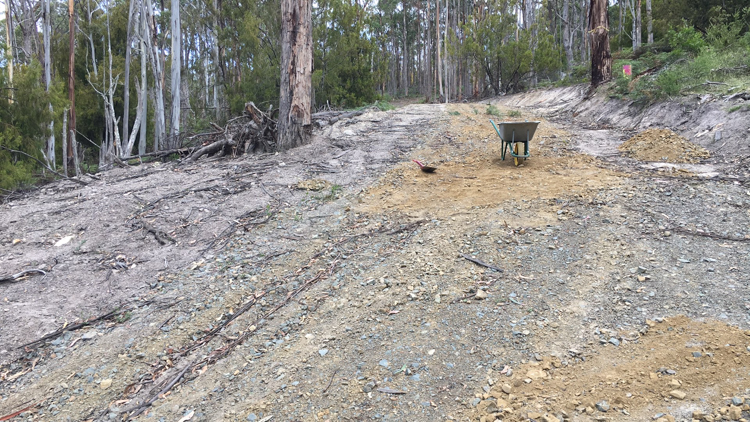
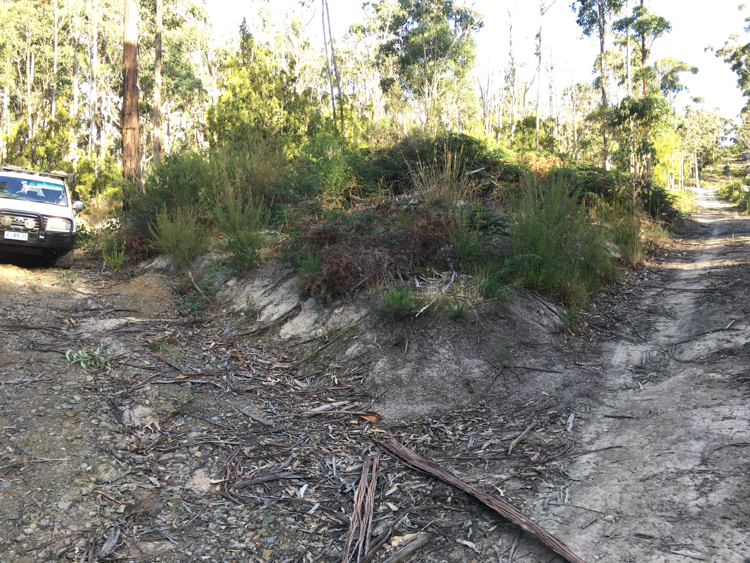
Part of the problem was the nominal road. Why do I call it ‘nominal’? Before I purchased the property, this end of the official road existed only on a map. On the ground, there were only a winter creek and lots of trees. I asked a friend with a bulldozer to push the road across the creek and about half way up the hill, giving access to a small track into my property. Much later, I had a new driveway cut on a better route, and at the same time my farming neighbour pushed the nominal road further, over the hill between our properties and down the other side. This gave him fire trail access to some of his farther fields; you can see the extended road to the right of the photo above. The road is fine in itself, but it is steeply sloping clay and it sheds water across my driveway junction, washing away and undercutting the exit.
The other part of the problem was that the gravelly surface of the turn was heavily cambered and just too darn steep for a two-wheel-drive car to navigate.
I decided on a two-pronged approach. Firstly, I would try to reshape the junction to make it easier to navigate, and secondly, I would put a French drain across my driveway exit and pipe it all the way down the hill to the creek.
I used the digger to remove the upper edge of the curve, to straighten it out so that the driveway met the road at right-angles instead of curving into it. Then I used a mixture of forest earth, spall, road base and blue metal – basically whatever came to hand – and raised the level of the driveway junction by about a third of a metre.
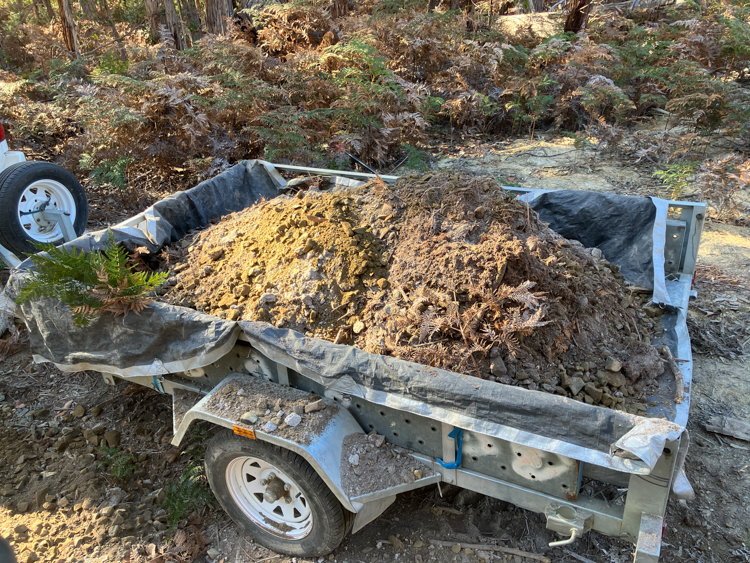

Raising the surface of the driveway, to make the junction less steep
This photo gives quite a good perspective of how much I lifted my driveway junction above its original height.
Since the treads of the excavator have a tendency to rip up the surface, I tamped down the surface by repeatedly towing a trailer full of rocks over it.
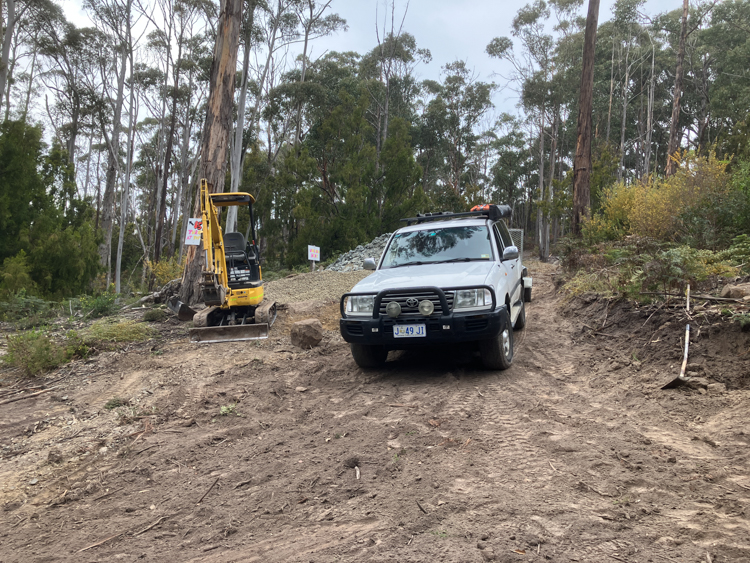
So far, so good!
Now that I was happy with the height of driveway junction, I dug it up again to put in a French drain.

At around this point, my friend Pete arrived with a shovel, which made things go a lot faster because I could focus on driving the excavator, loading Pete’s trailer and barrow, and pointing at things.
We took advantage of the natural rain gully that had formed on the upper side of the driveway, and teed it into a trench that we dug coming down from the top road. This part is a proper deep French drain lined with 20mm aggregate and containing a sleeved and slotted ag-pipe. There’s a bit of excess sticking out in this photo which has since been cut off.


Pete and I were pretty tired now, so we set up camp for the night, ate steak and drank negronis by the fire, and then retreated to Pete’s van when the heavens opened.

We wondered if all our hard work would be washed away by the torrent, but in the morning both the creek crossing and the half-finished French drain had coped admirably.
Back on the tools, we led the combined run-off from both French drains all the way down the road to the creek. I didn’t put quite so much effort into digging and lining this channel, as it’s nice and steep and exists only to move the water down the side of the road.
In fact, by the time we (well, Pete) had shovelled our way halfway down the hill, we were knackered and called it a day.


In the event, other projects intervened, and it wasn’t until some six months later that I was able to return to finish up. Even with just bare ag-pipe for the bottom stretch, it was clear that the French drains at the top were working as there was no erosion across the driveway junction and equally no erosion down at the creek.
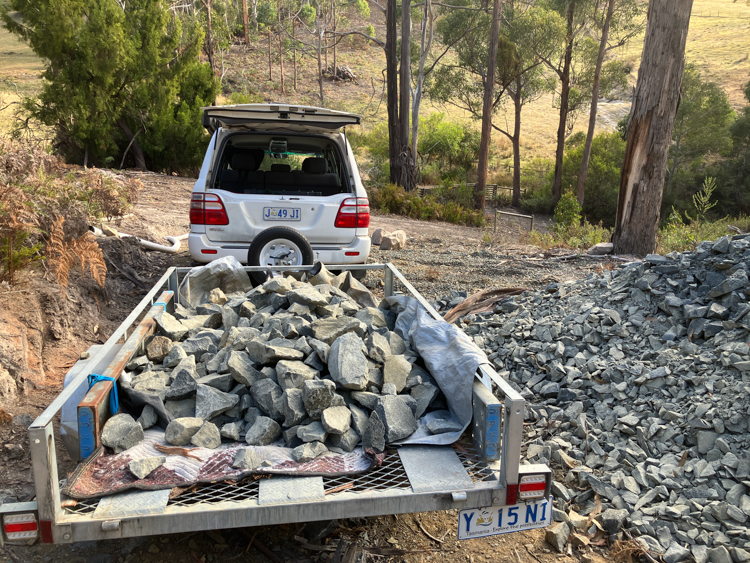
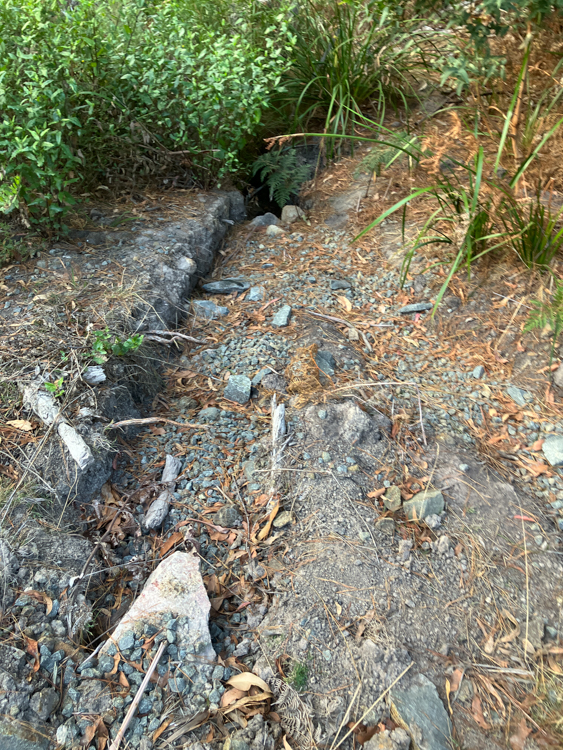
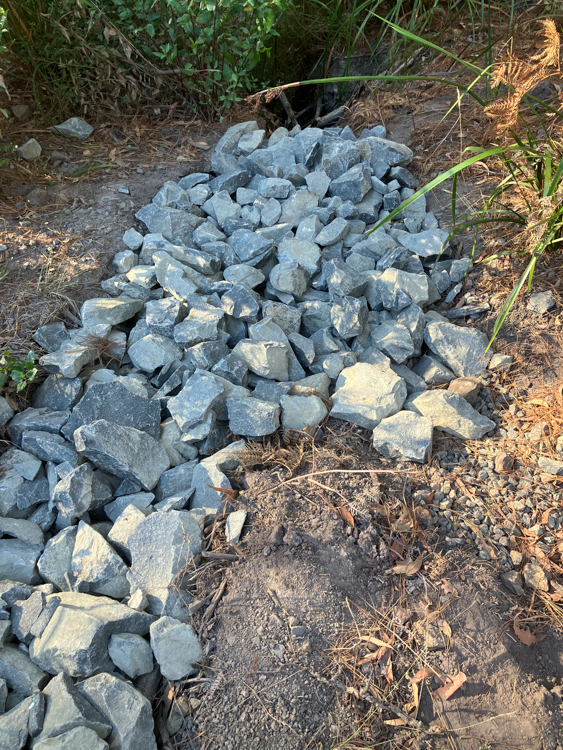
On this second visit, everything had to be done by hand, because the bottom stretch is so steep that it makes working with an excavator quite tricky. I had hoped to rent a skid-steer but the rental place told me that theirs wouldn’t be able to work across the slope, so it was out with the rake and shovel.
I had Duggans quarry deliver another 12 tonnes of 20mm drainage aggregate. I had kind of hoped that they would be able to pour it out of one side of the truck as they drove up the hill, so that I could simply rake it sideways into the trench. That wasn’t an option, but the driver did a great job of backing across the road and dropping the load in a series of piles to make my life easier.
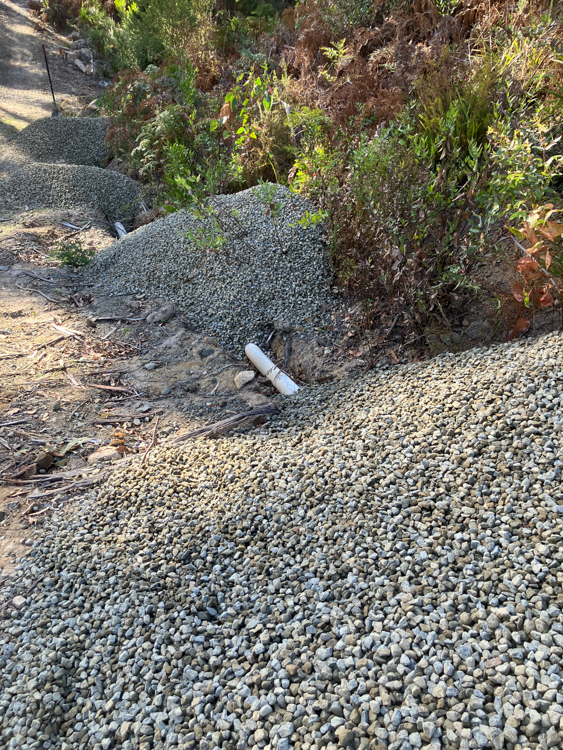
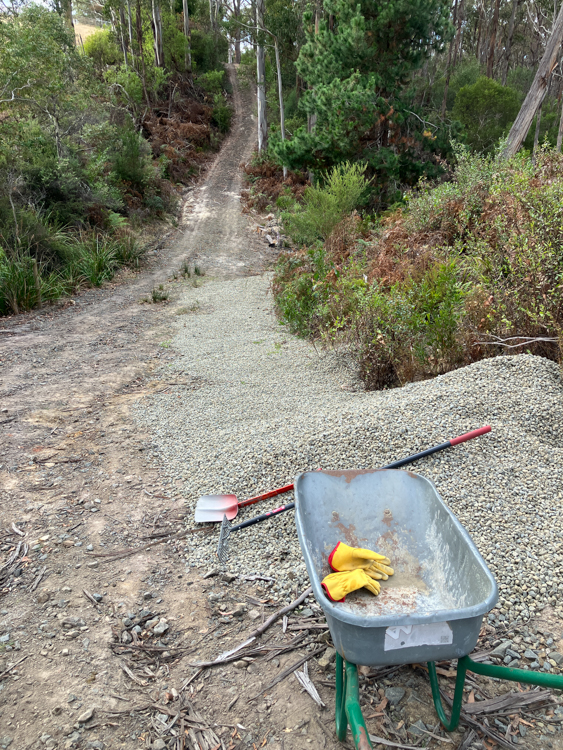
The raking and shovelling was still a lot of work and it took me all of the morning. Once I’d finished the bottom half, leaving some excess on top as I had nowhere to put it (I’ll put up road markers to stop people from driving on the crunchy bit), I still had quite a few tonnes of aggregate left over about half way up the slope. I tried to barrow it up the hill but it’s far too steep to push. I could have got the trailer and shovelled it in, but it had already been a long hard day and the gravel isn’t going anywhere, so I’ll save that task for another day.